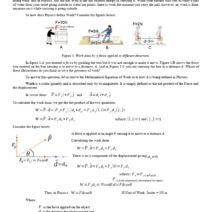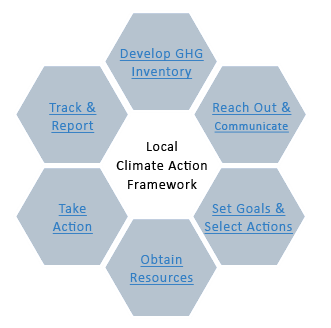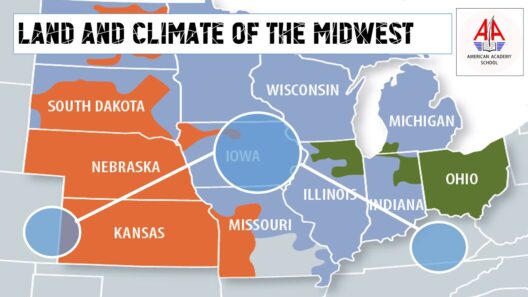In an age where the looming specter of climate change casts a long shadow over our planet, the imperative for substantive action is indisputable. One of the most powerful, yet often overlooked, strategies lies in the consumption of locally sourced food. Imagine transforming your plate into a battleground for climate justice, where every bite of local produce becomes a ripple that extends its influence across the globe. The concept of “Local Bites, Global Benefits” encapsulates this transformative potential, connecting individual choices to the fabric of global sustainability.
Eating locally has been likened to a well-tuned orchestra; each member plays a crucial role in creating a harmonious symphony. By choosing to consume locally grown food, individuals effectively contribute to a multifaceted ecosystem that fosters environmental stewardship, economic vitality, and community cohesion. The links between local eating and climate mitigation are as profound as they are intricate.
To understand the environmental ramifications of our food choices, we must first consider the scale of industrial agriculture. The transportation of food across vast distances necessitates substantial fossil fuel consumption, emitting greenhouse gases that exacerbate global warming. According to studies, food can travel up to 1,500 miles before reaching our tables. Each mile represents not just a physical journey but an environmental footprint—a heavy burden on our planet’s delicate ecological balance.
In contrast, eating local significantly trims this carbon footprint. By sourcing food just down the road rather than across the country, we minimize the energy and resources required for transportation. This direct connection is a testament to the profound impact that localized consumption can yield. Think of it as a pebble thrown into a pond; the ripples spread outward, symbolizing the far-reaching effects of our dietary decisions.
The merits of local agriculture extend beyond merely reducing transportation emissions. Local growers often employ sustainable practices that prioritize biodiversity and soil health. This stands in stark opposition to the monoculture systems characteristic of industrial farming, which deplete ecosystems and compromise resilience. Farmers who cultivate in harmony with nature are akin to guardians of the Earth, fostering practices that restore rather than deplete.
Moreover, local food systems bolster economic resilience. When consumers purchase from nearby farmers, they circulate dollars within their community. This circulatory model not only sustains local businesses but also strengthens community bonds and provides livelihoods for farmers. It champions a refreshingly democratic notion that food—and by extension, our future—should not be a commodity to be monopolized, but a shared resource cultivated through cooperation and mutual respect.
When people begin to eat local, they engage in a sense of place that nourishes both the body and the spirit. The connection between consumers and producers fosters a rich tapestry of cultural exchange, weaving together stories of tradition, innovation, and sustainability. Farmers’ markets become microcosms of community engagement, where individuals meet not only to buy food but to forge relationships and build resilience against larger societal issues.
The metamorphosis does not halt at the local level; its implications reach far and wide. Sustainable local practices, especially when scaled, can influence national and global agricultural policies. When communities champion local food systems, they signal to policymakers that there’s a profound appetite for change. This groundswell can pressure entities at various levels to reconsider agricultural incentives and support green initiatives—paving the way for a much-needed paradigm shift in food governance.
For individuals enthusiastic about this movement, it is vital to consider practical steps towards local eating. Simple acts can yield significant change—start with joining a community-supported agriculture (CSA) program, attending farmers’ markets, or even growing a garden. Infusing local ingredients into culinary routines not only enriches meals but also brings us back to the inherent beauty in simplicity and respect for the land. This shift in dietary reliance necessitates curiosity about what is in season and a willingness to experiment with new flavors. Each ingredient tells a story—a narrative of soil, climate, and care.
Another dimension to “Local Bites, Global Benefits” is the remarkable ability of community initiatives to galvanize collective action. Food co-ops, community gardens, and nonprofit organizations can serve as platforms for education and outreach. They can help cultivate a public consciousness about the environmental impacts of our food systems and the urgent need for change. Community engagement becomes not just a means of acquiring food but an avenue for reshaping societal values that prioritize health, sustainability, and equity.
It is also critical to foster a dialogue about the importance of food equity within local food systems. The reality is that not all communities have equal access to local, fresh food. Addressing systemic inequities is quintessential for the movement towards sustainability. Advocating for programs that provide access to underserved populations must be at the forefront of the local food narrative. A truly sustainable system is one that leaves no one behind.
In the final analysis, the power of eating local goes beyond mere dietary preferences; it is an assertion of agency against climate change. Each meal can be a testament to resilience, an alignment of ethics with actions. The choices made on an individual level create an unstoppable momentum, generating a holistic effect that extends beyond local boundaries. Let us wield our forks as instruments of change, each bite embodying a vision for a sustainable future—one that fosters respect for our planet while feeding our communities. This is not just food; it is a movement rooted in purpose, passion, and the promise of a healthier planet.








